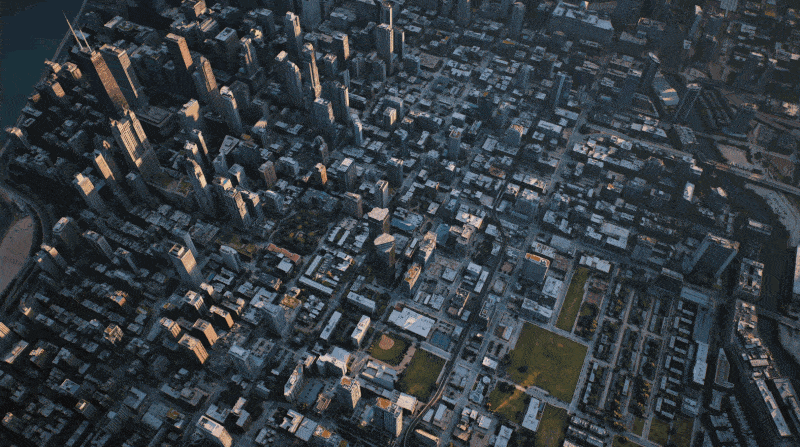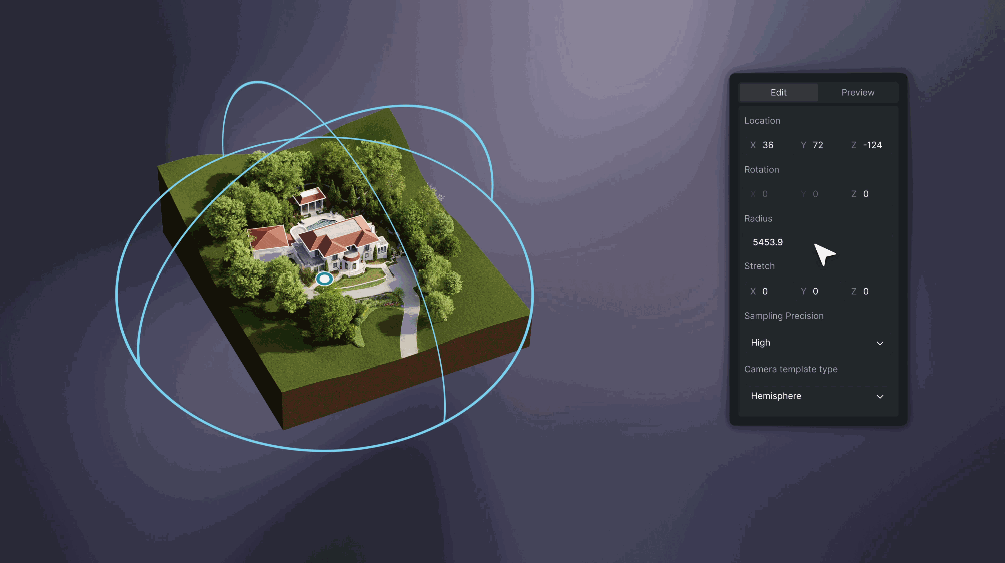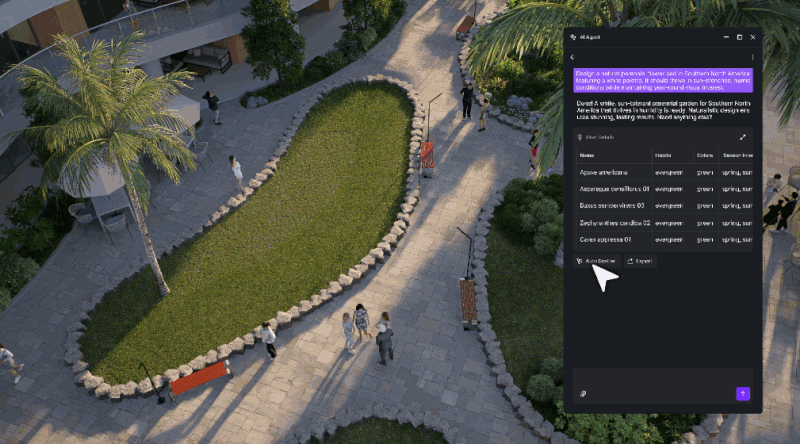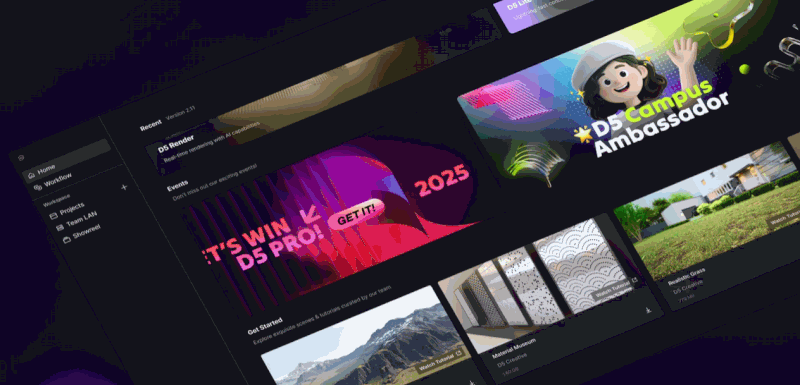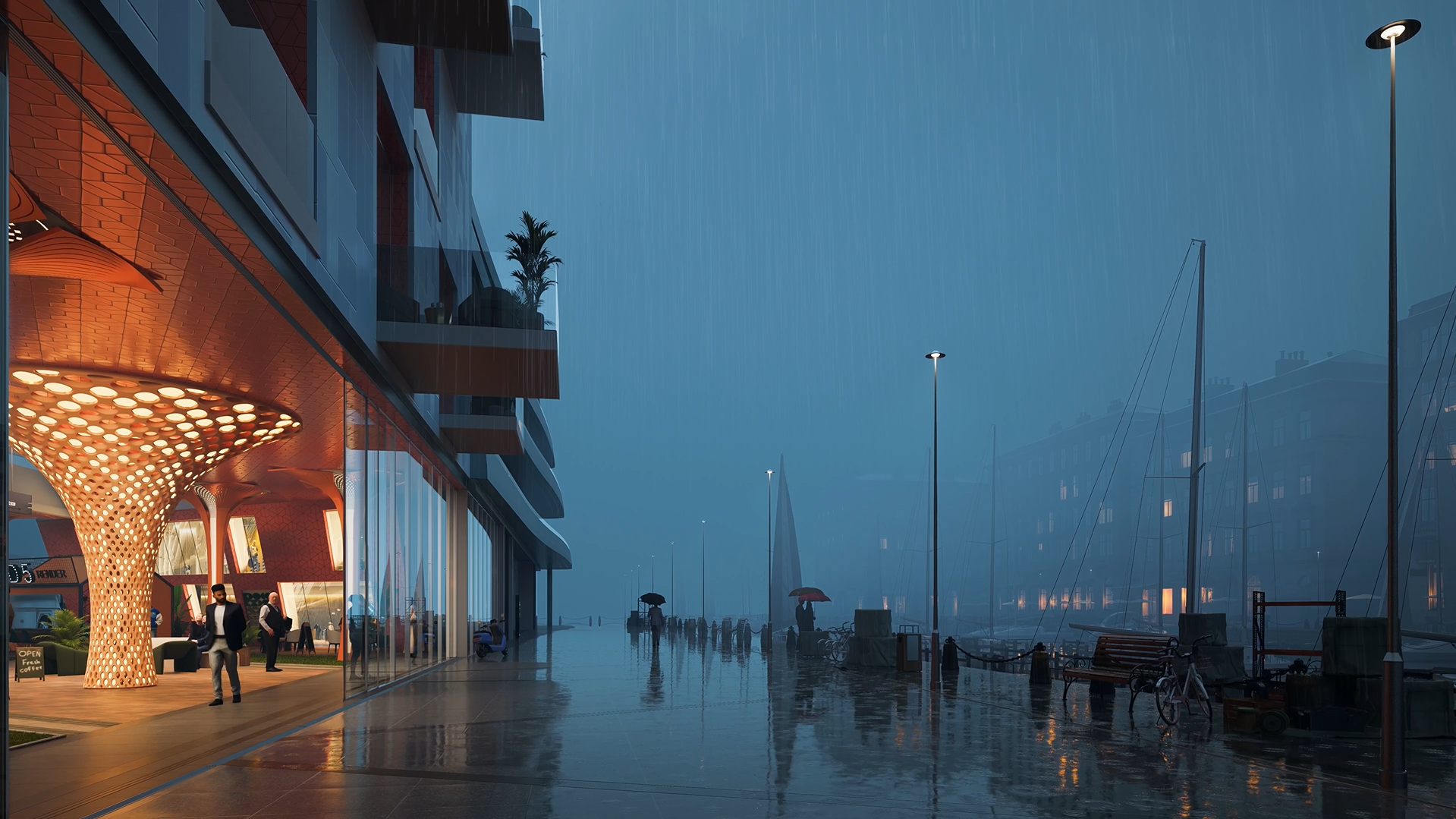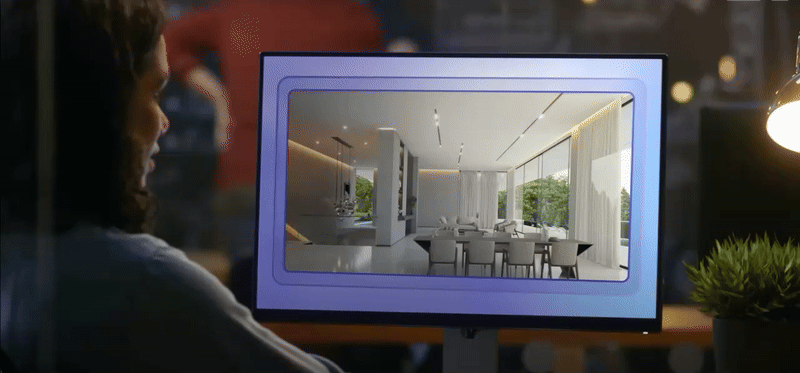Meet the Team
Yunfei Xie, studying for PhD in Architecture at Waseda University. Intern at Eureka, Japan. Adept at CG architectural visualization. Qifan Zhang, studying for Master's degree at The University of Tokyo. His field of research is 3D scanning and printing in Architecture. A dreamer and writer. Leisen Wu, expert in generative design in Architecture. Participated in Noah algorithm development.
This team of three has won home 1st prize in this year's INTERNATIONAL BAMBOO PAVILION DESIGN. D5 Render was used as the only rendering tool for their entry.
Winning Entry
Congratulations! How does it feel to win in a global competition?
Thank you! For those that don't know about the competition, International Bamboo Pavilion Design Competition is held annually by WBW (World Bamboo Workshop), exploring global creativity to create a contemporary pavilion. It focuses on bamboo as a renewable and eco-friendly material in pavilion design.

Seeing the news on the website, we decided to join right away since it seemed like something we're interested in. Our team went all out, and the brainstormings we had were just incredible! Dealing with bamboo is new to us, so that was a little challenging. Another challenge would be the timeline. We normally wrap up a project in 2 to 4 weeks, which includes concept, rendering and presentation. Honestly, this entry has been nerve-wrecking because we need to finish modeling and rendering in 3 days. Without D5 Render, we wouldn't have been able to meet the deadline with high-quality renders.
Architectural Hat of View | Breakdown
This year, the competition is held in Vietnam, where our design is supposed to be constructed (unfortunately this year we couldn't see our design turn into reality due to covid). The judging criteria include the following:
- Innovation—does the design stand out, provide something new and unique, or supplement/improve upon a previous concept?
- Aesthetics—artistic value of the form, shape, color, texture, finishing, engineering, material used, etc.
- Feasibility of production—how realistic is it, technically and economically, to bring this design to production and use?
- Utility
- Impact
- Durability
- Ecological compatibility
- Emotional quotient
Taking these into account, we attempted to connect the design to its natural surroundings, and started with the site location. We set the pavilion in the middle of bamboo forests on the hill, and named it Architectural Hat of View, a dynamic architecture in the shape of a hat that serves as a fantastic sightseeing spot.
We got inspiration from traditional Vietnamese hats when picturing the shape of pavilion. Then, we designed two different openings, and kept appropriate space in between the bamboo structure to create a space that provides an entertaining, interactive visiting experience for the local residents. Seeing out from the brim of this architectural hat would be like twisting a kaleidoscope. You get the amazing view from an expected angle.At the top of the pavilion, you'll get a nice view of the mountains on the other side of the river, so we designed a spiral ramp to encourage climbing. By doing so, we introduce the visitors to the breathtaking beauty of nature from high up on the hill.


Insights
The theme this year is “Bamboo for Green Life and Sustainable Development”. Any thoughts?
I believe both WBW and the International Bamboo Pavilion Design Competition are closely related to sustainable development. From the theme you see the trend and pursuit of today's architecture and market. Sustainability is a global issue faced by all human beings, and we architects are supposed to be among the first to address it in our own ways. Everyone in the industry is responsible for making our planet a better place with "green architecture". Dezeen, the world’s most influential architecture and design magazine also does its part by announcing "Sustainability" shortlist every year to celebrate projects that make positive contributions to the environmental and society.

Shoud architecture students be encouraged to enter architectural competitions? Is it worth it?
I think it's all worth it. Be it competition, an assignment, or a real project, they work the same way.You are given a theme, some certain requirements, and then you're free to explore and create. Critical thinking, patience and design/render skills gained from such experiences should help you in all aspects.
You can hardly make amazing architectural design / visualization with a template or sample scene downloaded online. Every piece of work deserves to be treated as an individual project that you put efforts into, and take pride in. The brainstorming, the edits, and the final result are all of great value and help. It gives us an insight into what it's like to be an architect, and makes me more aware of my role as a student practicing architect, a city builder/shaper, a life changer in the future.
Entering competitions takes time, as you can imagine, but it's all worth it. Winning could be a great leap for us in our studies and career, but it's never the only goal for me. After all, being able to be part of a world-class competition, to see all the mind-blowing works from best of the best, and get reviews from a professioanl jury committee, is a great opportunity. Entering the contests is like taking a test. No matter what score I get in the end, I know I will learn a lot from it.
We are always on the lookout for competitions to enter, and these are the sites we view frequently:https://www.archdaily.com/search/competitions
https://kenchiku.co.jp/compe.html

How do you like studying architecture in Japan?
The part I enjoyed the most was participating in some non-profit projects for research study. In graduate school, our research lab had a project in Shōdoshima, Seto Naikai. The island was seeing a growing number of young immigrants every year, so our project focused on reconstructions of the abandoned buildings and houses, so as to boost immigration and help immigrants settle in on this village.

Rendering with D5
The winning entry looks stunning. How did you deal with the lighting in this scene?
The night scene was centered around the animals, which have also been occupants of this land. That said, we set the scene at nighttime when residents leave the spot for the animals to take over the pavilion.
Surrounded by bamboo forests, the lights coming from the pavilion serve as the only light source in the darkness. Animals and insects are naturally drawn to lights, so here the structure becomes the playground for wildlife.
You see a touch of warm yellow in the soothing blue hour. While the backdrop HDRI and the light sources show contrasting color temperatures, they blend into the scene and make a harmonious visual.
To achieve the effect we want, other than the main light coming from the pavilion, we also added complementary light sources to light up the side facing the camera.

Presentation is an important part of every project. Do you have anything to share in this regard?
To me, rendering is emotional and sometimes subjective. 3D visualization shows how I perceive the architecture. It's an efficient and intuitive way of illustrating the structure and ideas, while other diagrams demonstrate the information more precisely. Each of these methods is indispensable.
From what I've learned here in Japan, Maquette model is a must. It's handmade, and has its advantage over computer generated models. By making the demo model and seeing your design in real life, you have a better grasp of materials, structures, and space.


Please share with us more projects rendered with D5 Render.
This is a theme park of ours in collaboration with Kengo Kuma for an outdoor sports brand and the local government in Japan.

At least 4 parties were involved in this project, and we were in charge of the overall design. D5 has helped us communicate with co-workers, clients, and partners in a more efficient manner. With the demo clips from D5 and the precise previews, we get our ideas across.

Output is quick. Feedback is quick. Editing is quick. D5 just took the burdens off and let us focus on design and rendering.
What's your common workflow and how do your teammates work together?
For modeling, we mainly use SketchUp and Rhino, after which we render with D5 Render.Both SU-D5 and Rhino-D5 livesync workflows work great, and the ease of scene building, abundance of D5 assets (textures, models) have made our work even easier.




Our team is divided into concept designing, modeling and visualization. Although everyone has his own role and responsibilities, it's not like we only mind our own business, and hand over our part of the work to the next one to proceed. For example, we won't wait until design and modeling are all finished to start rendering. We don't have time that.
D5 has enabled us to start visualizing right away with idea in mind. If I'm provided with roughly-made models, I can still get started with rendering in D5 because it allows for edits and replacement. I can base my render on the model I have, and replace with more well-made ones once they're ready. It just saves so much time and maximizes our output capacity.

Why did you decide to switch to D5 Render?
I was a V-Ray user before I knew about D5 Render. However, on the first day I opened D5 back in 2020, I decided to just ditch my former workflow and make the purchase. The switch was mostly due to the jaw-dropping efficiency and output quality provided by D5. Honestly, as architecture majors, we've used various software for designing and rendering, and D5 is one of the easiest to get started with.
The UI and commands are very clear, intuitive, and designer-usable. We didn't struggle to use it on the first attempt at all. We were able to render an animation several hours after downloading D5. Compared with other rendering software, D5 offers the best and fastest workflow.
Why did you decide to switch to D5?
No need to worry. D5 is extremely user-friendly and I'm sure you'll get a hang of it pretty quickly. In case you need help when just getting started, D5 has made a detailed user manuel and a series of tutorials for you.
To take your renders up a notch, I think learning the basics of Computer Graphics will help. If you know how lighting, PBR materials work, then rendering surely would not be a hard nut to crack. For animation making, you can always learn from photography.
Anything you want to say to D5 Team?
I've enjoyed my workflow now with D5, and each update just wowed me and the team. I remember we had a real estate project in progress earlier this year, and D5 released a collection of interior models, which was a life-saver!
Thank you for your amazing product and frequent updates! I'm looking forwadr to the day when D5 tops all the charts in the field of 3d visualization.
If you are also an architecture major, and use D5 Render for your assignments, research and competitions, you can explore more of D5 for free by applying for D5 Edu.

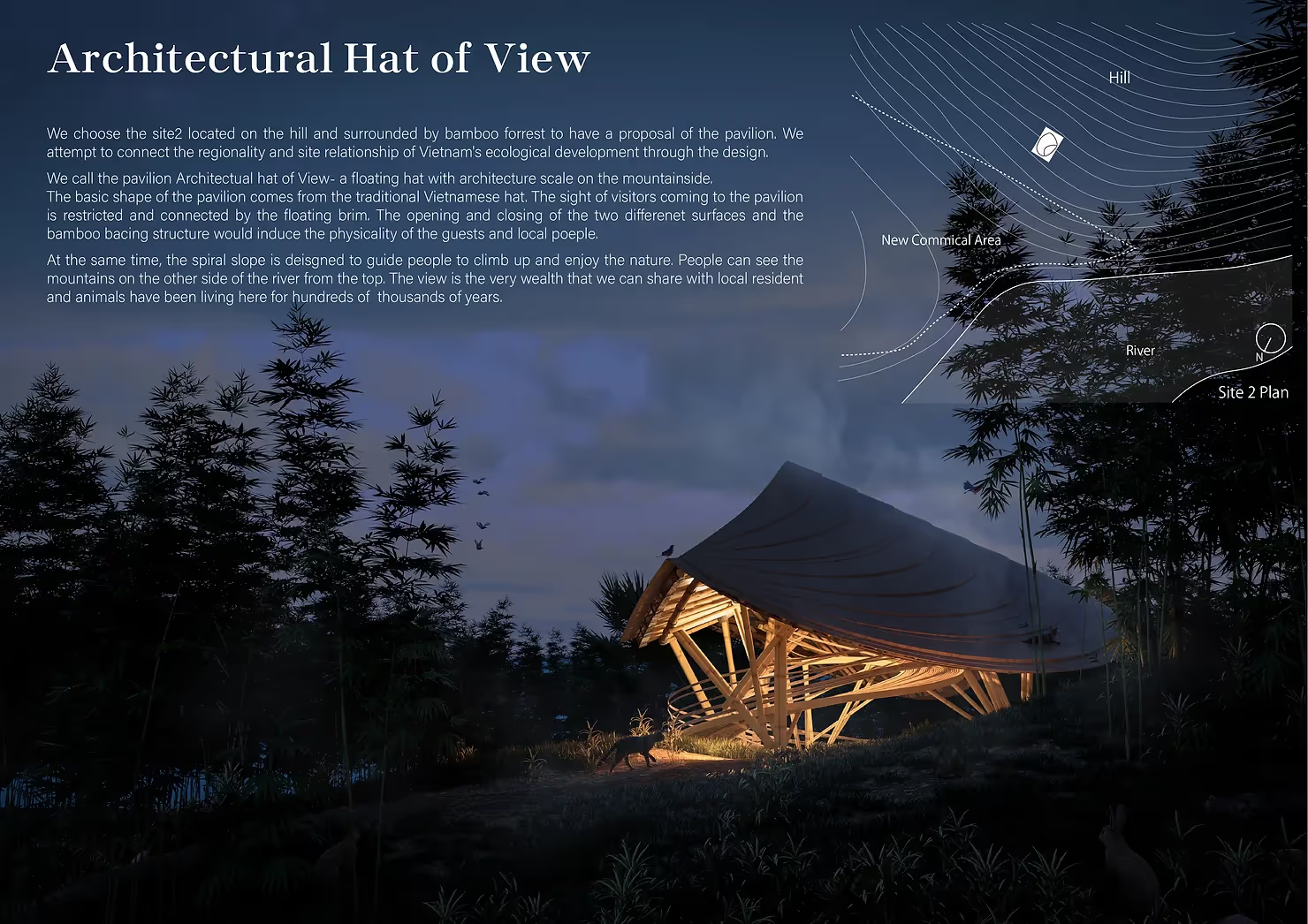


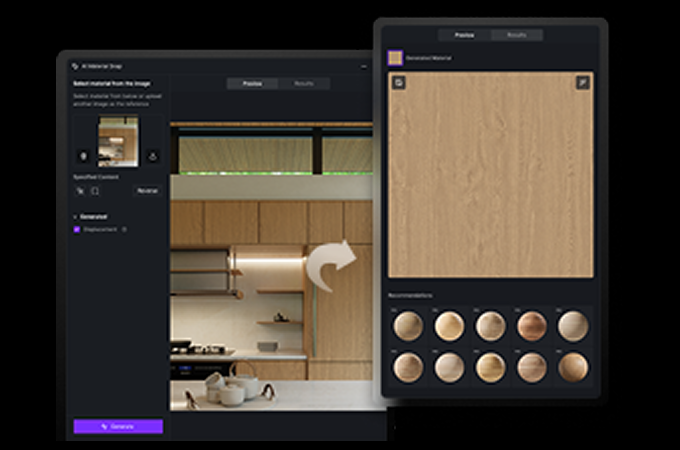
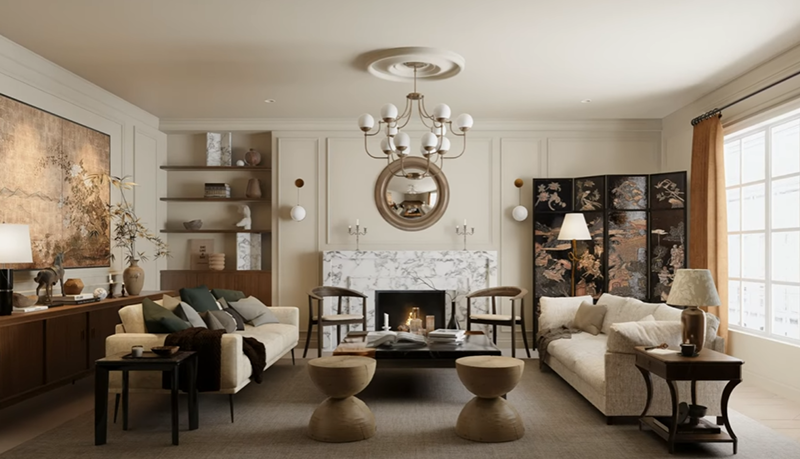
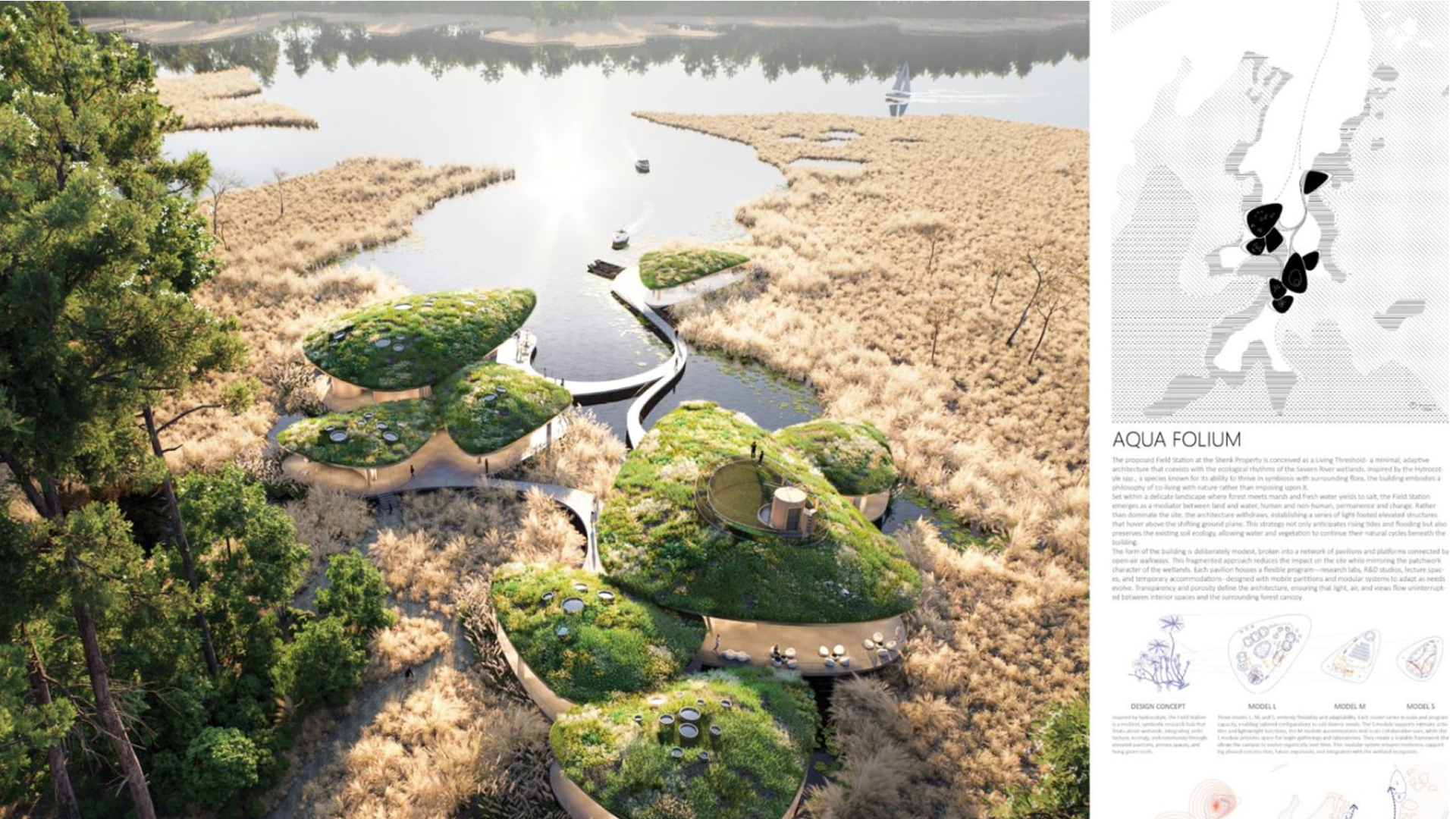
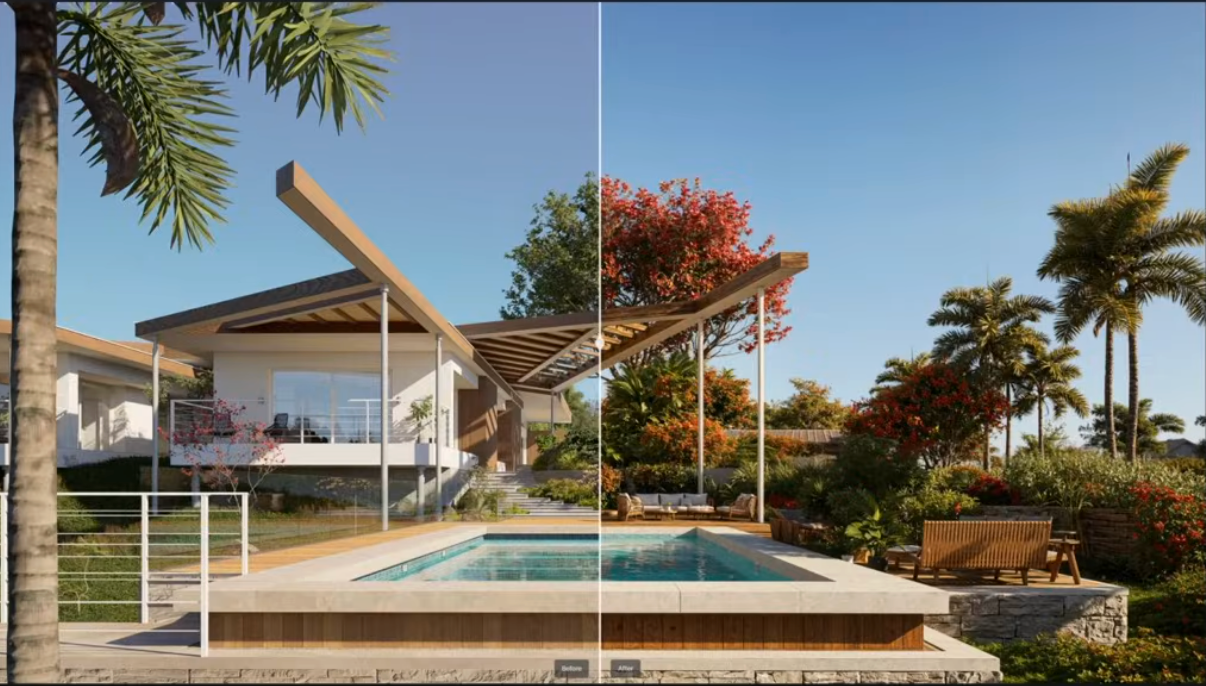

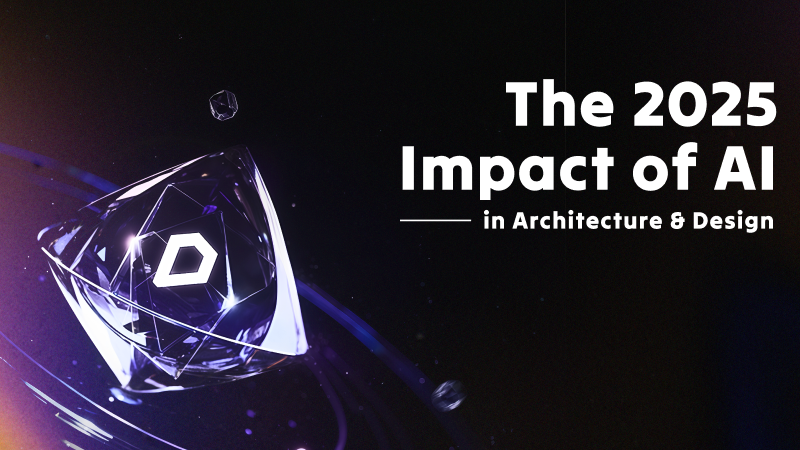
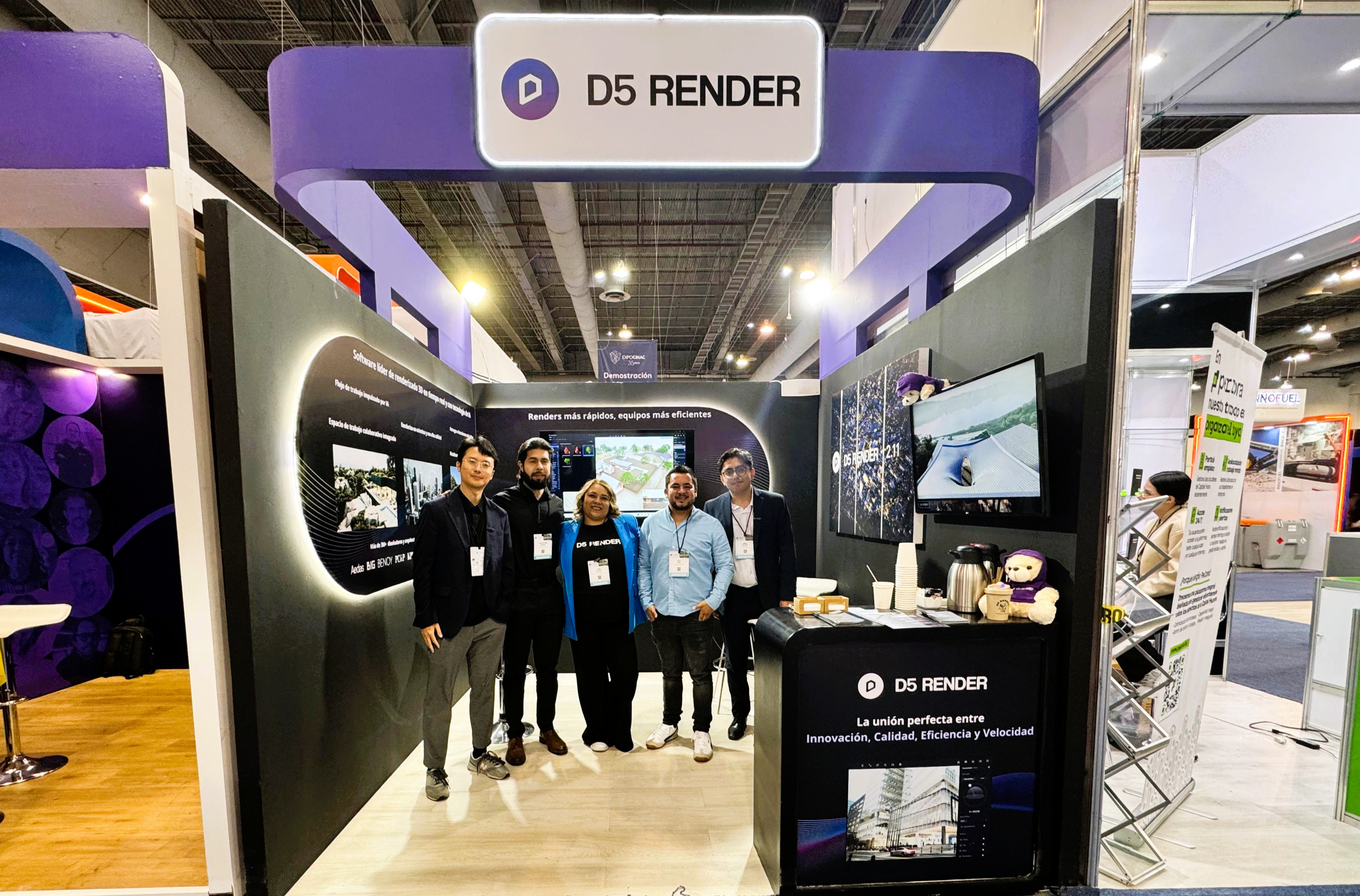

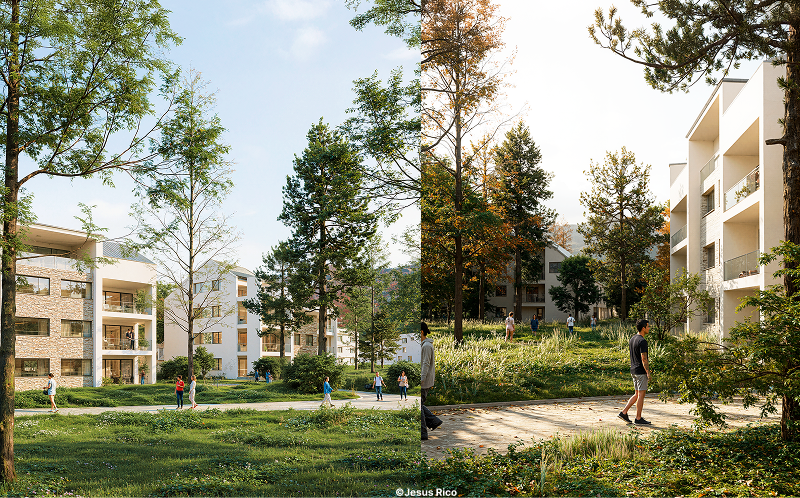
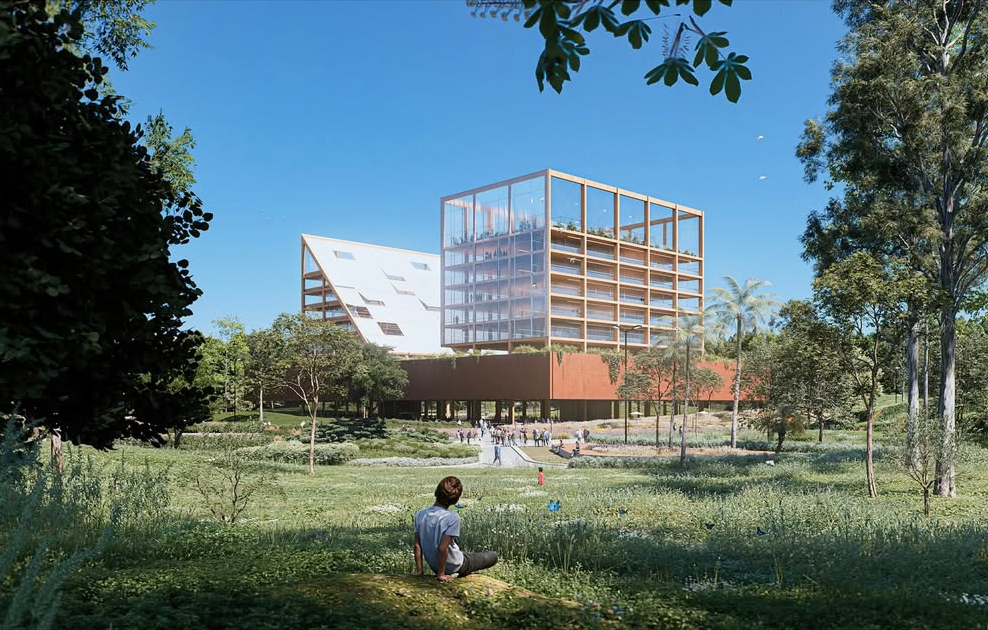

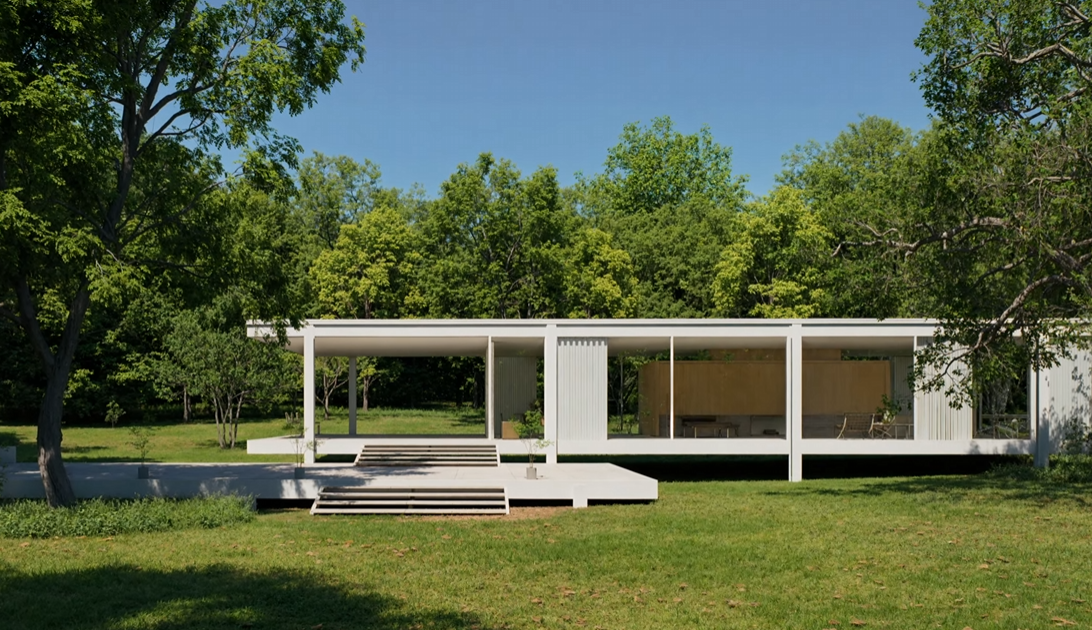

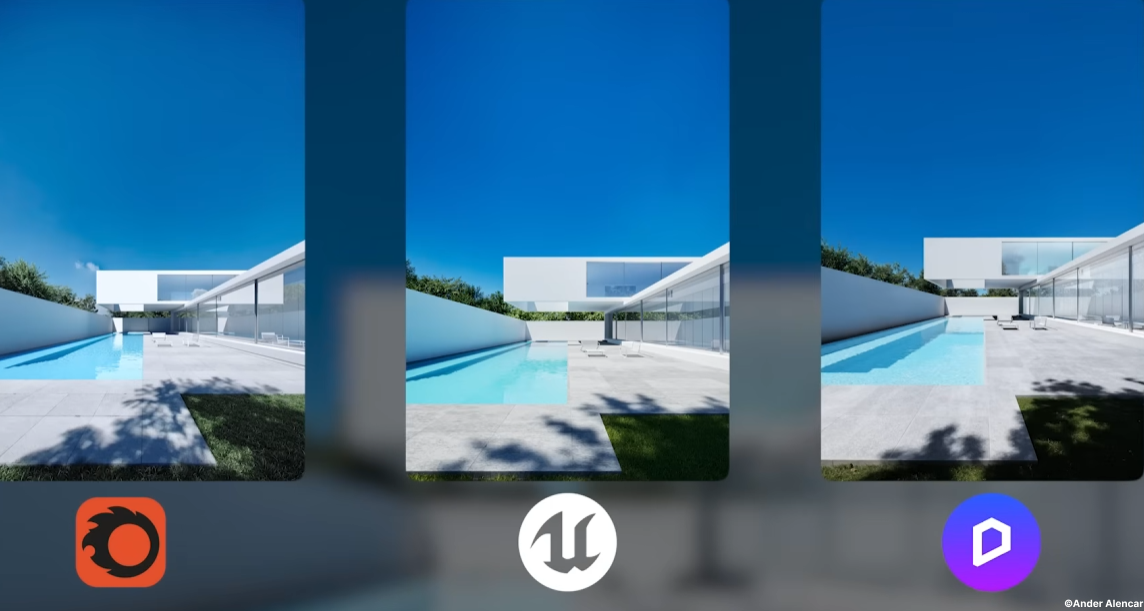
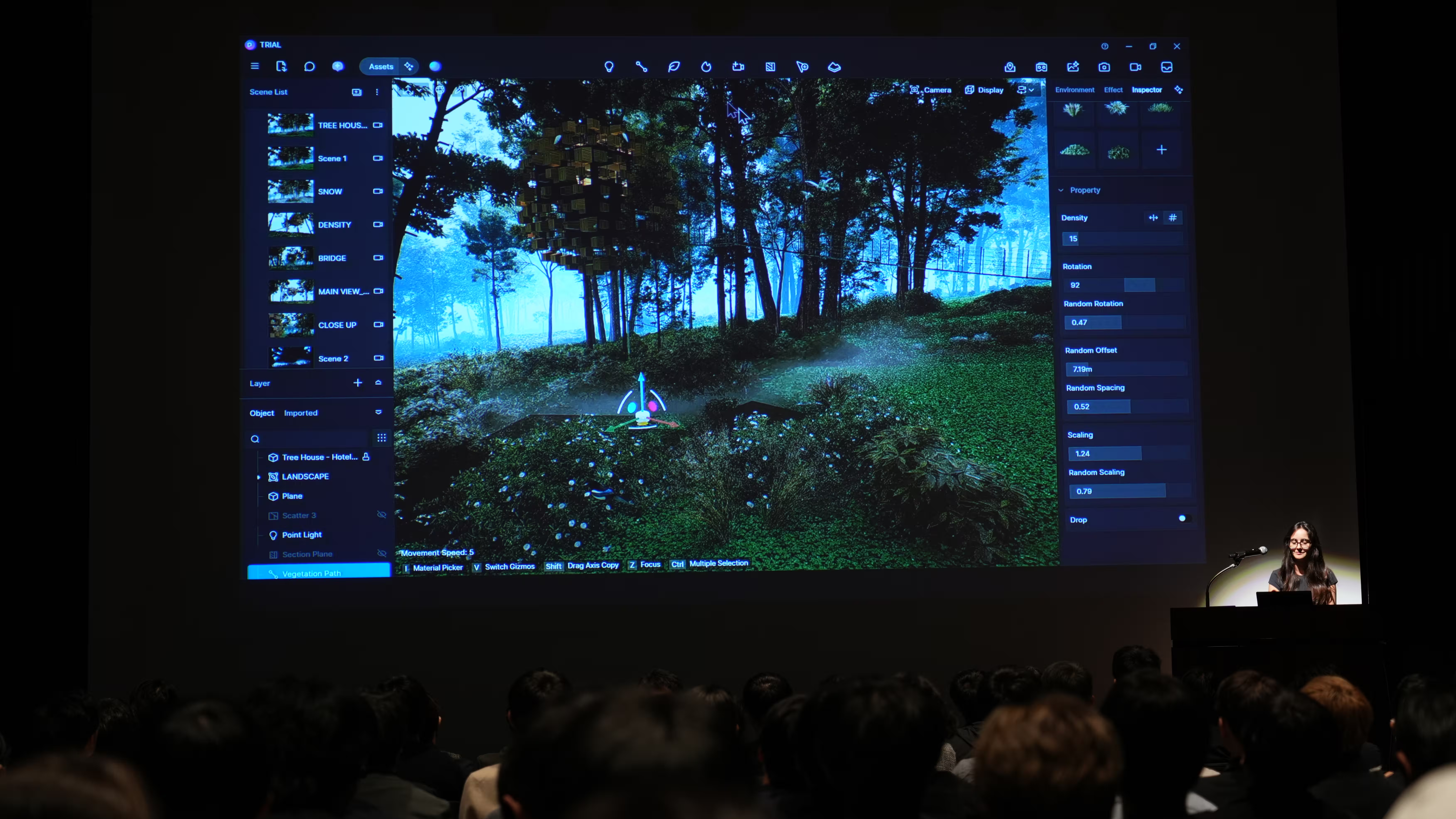
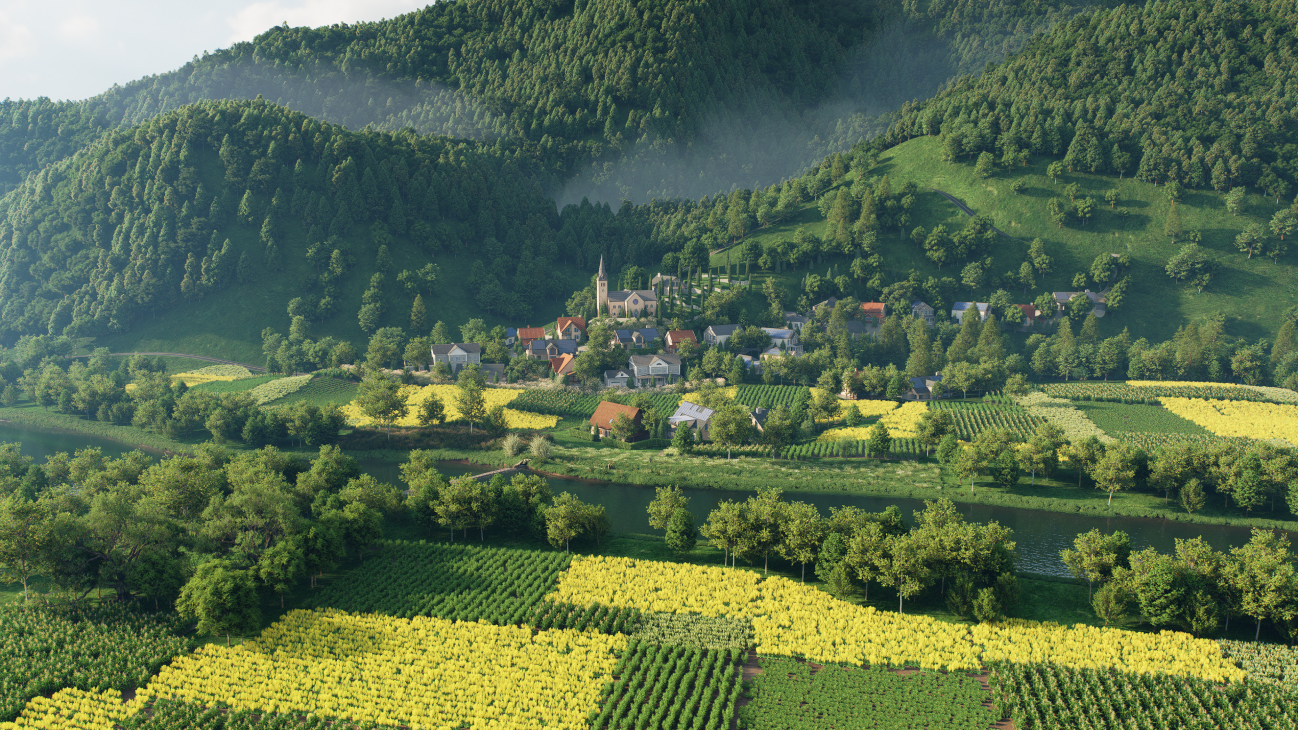
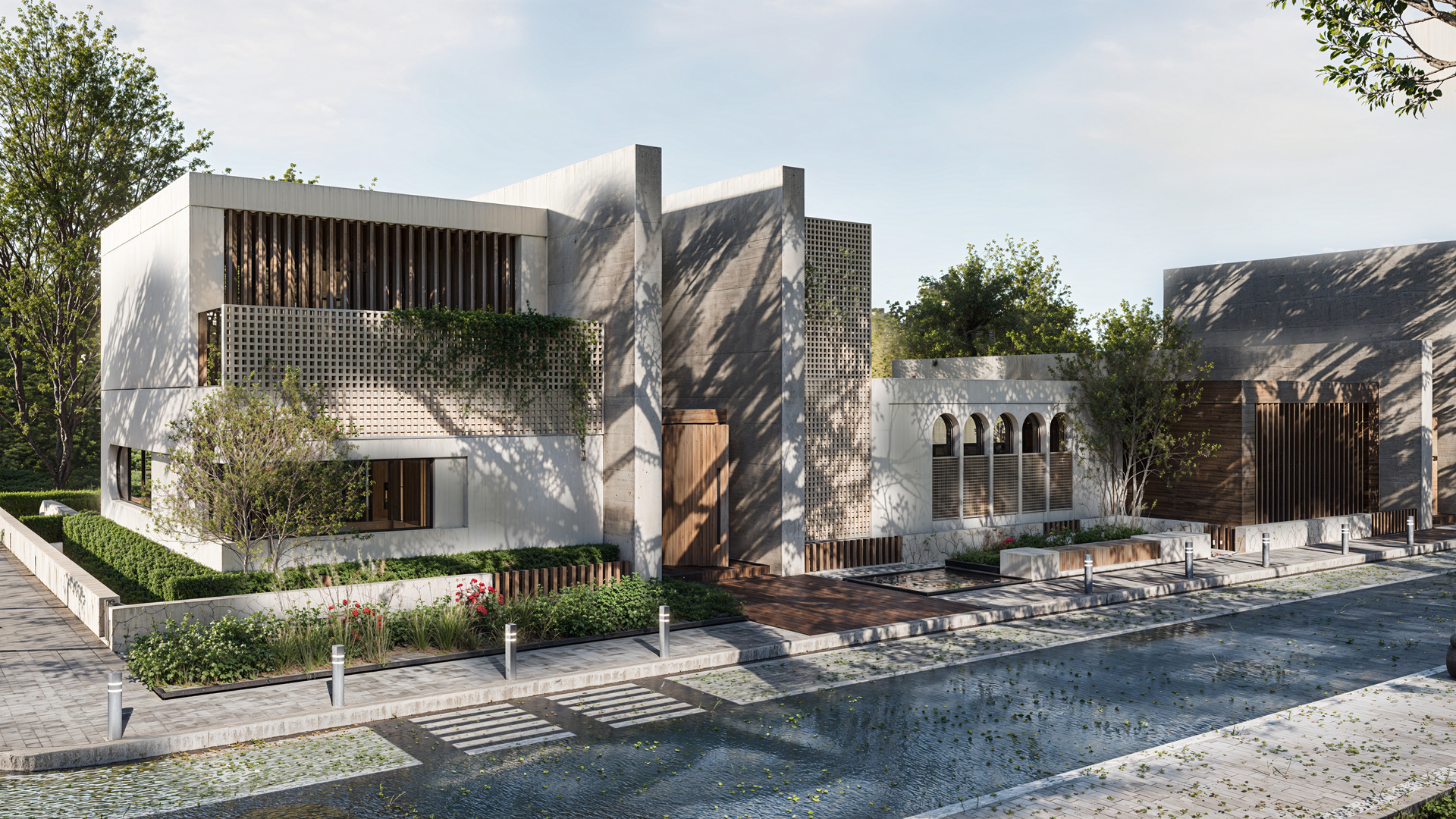

%20(1).png)
.png)

.png)

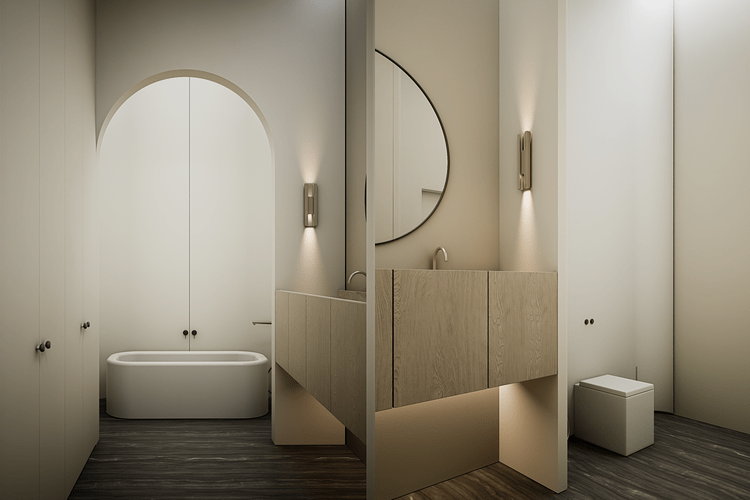
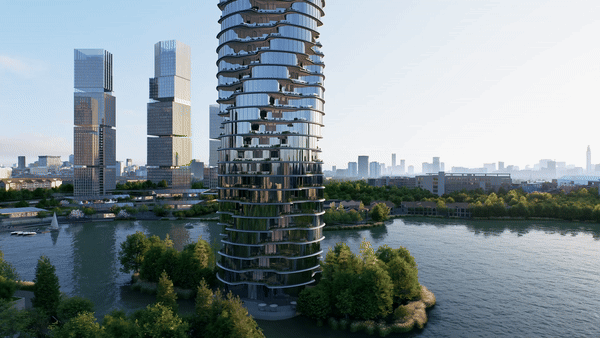

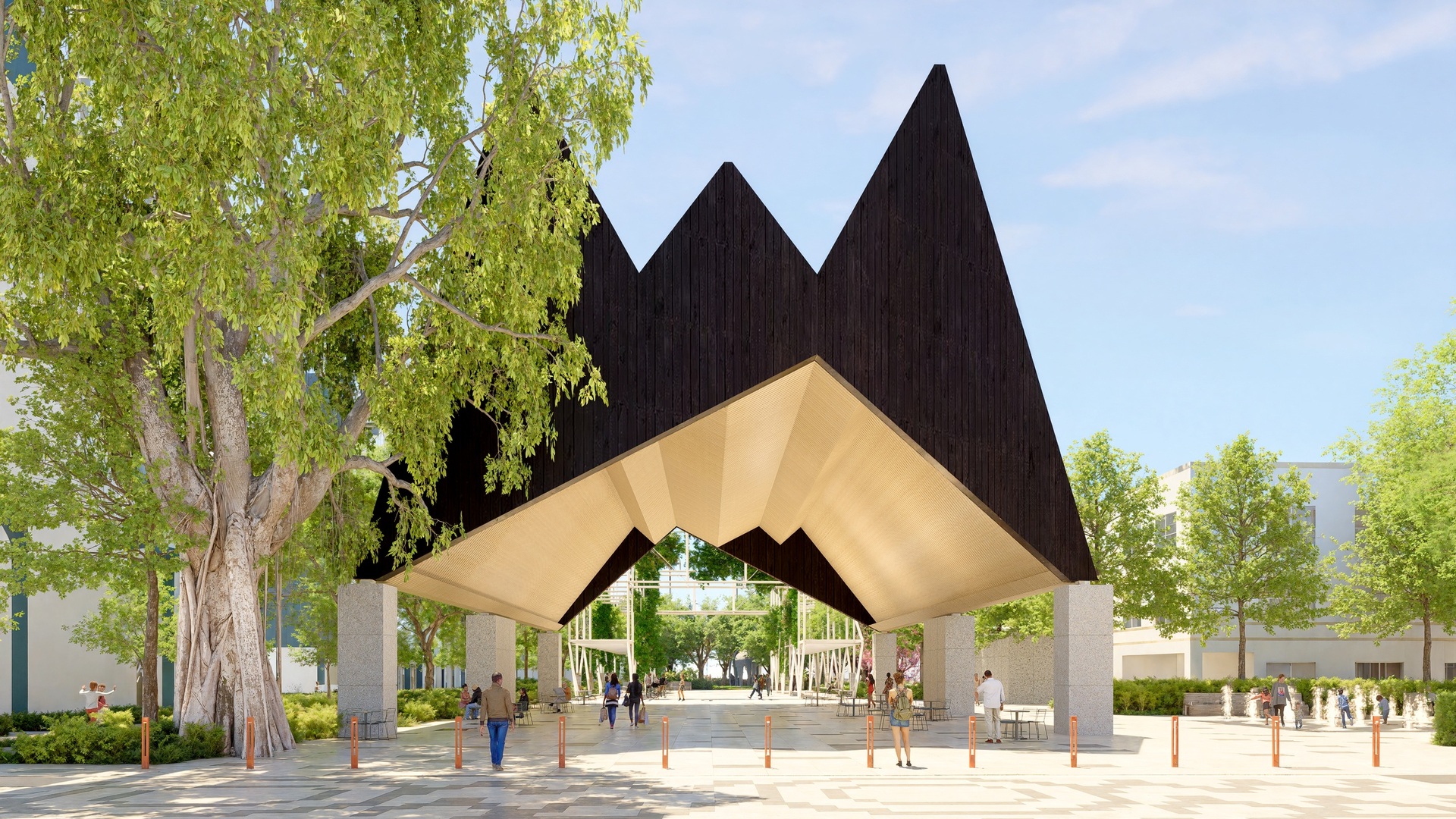

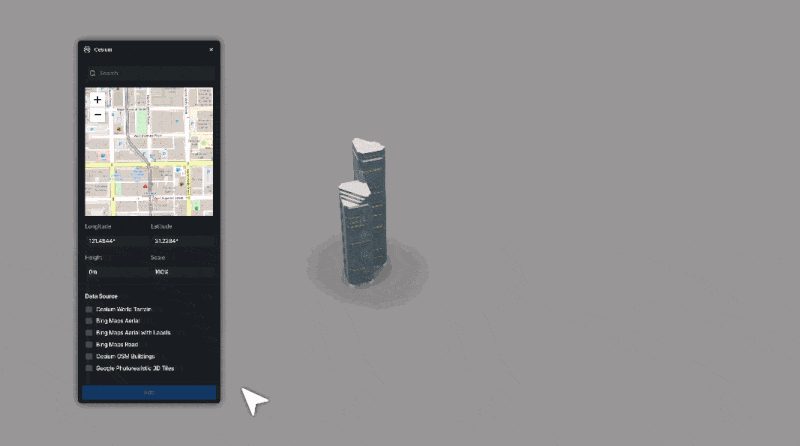




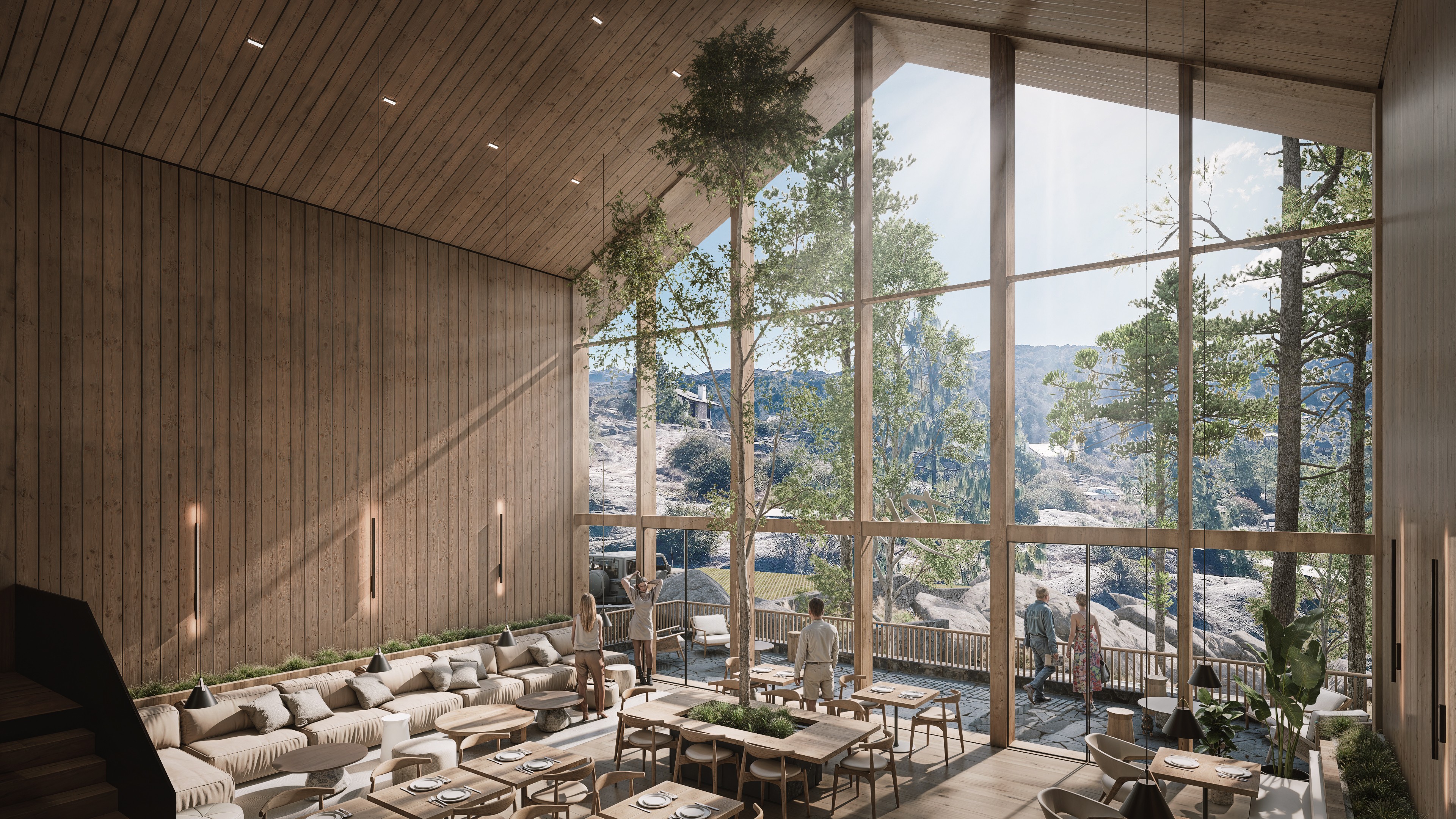
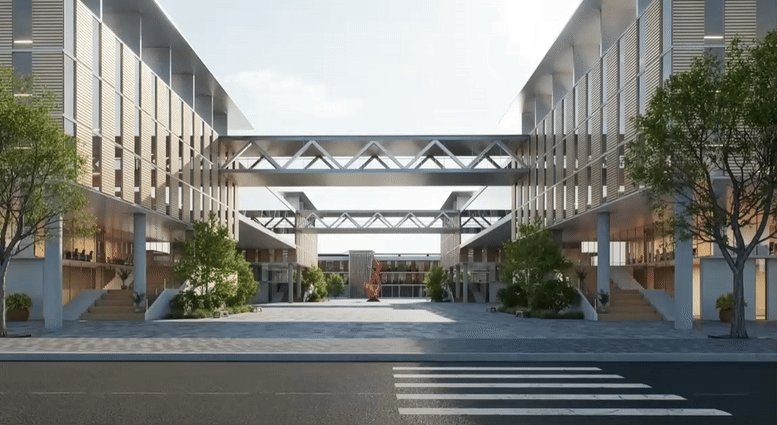
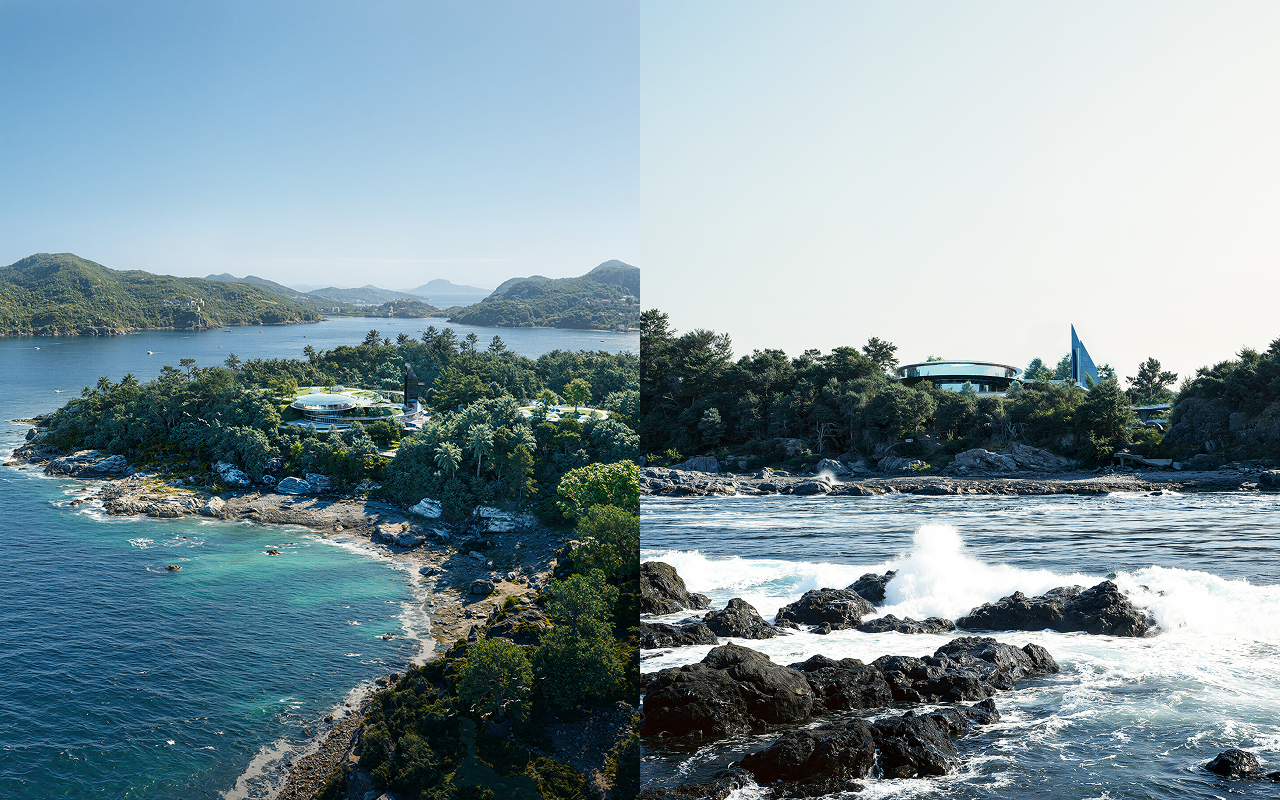
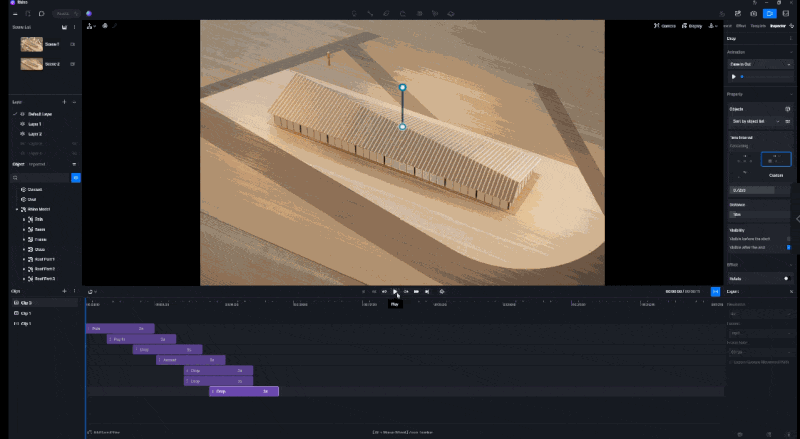
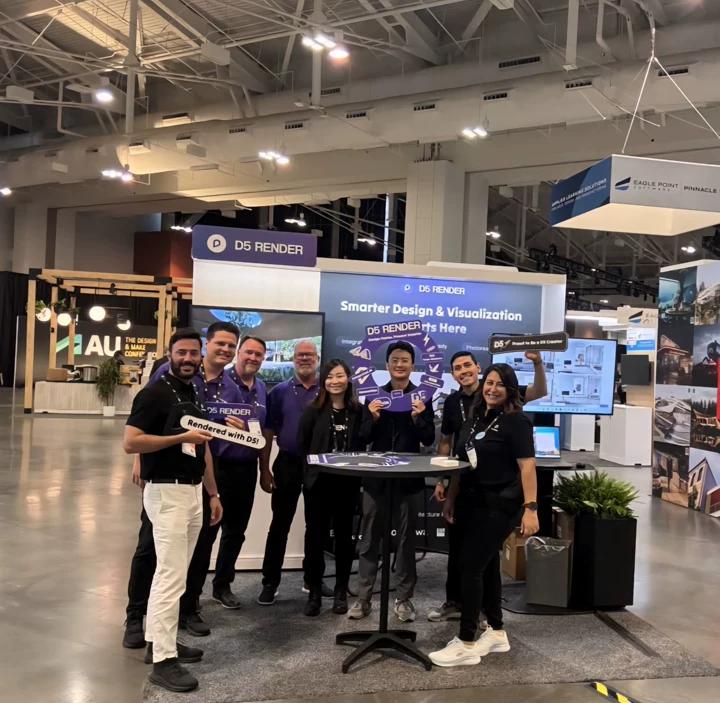


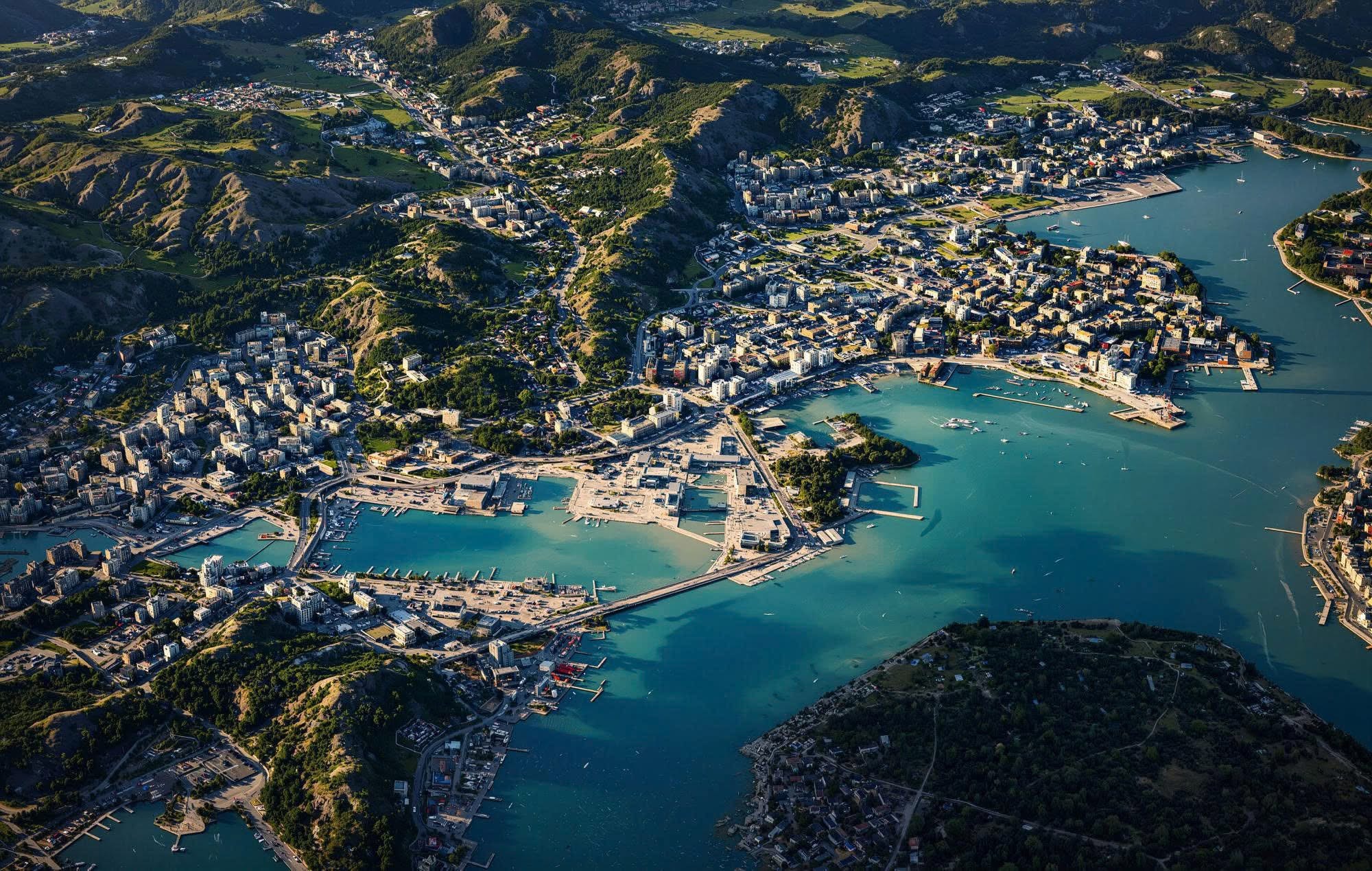
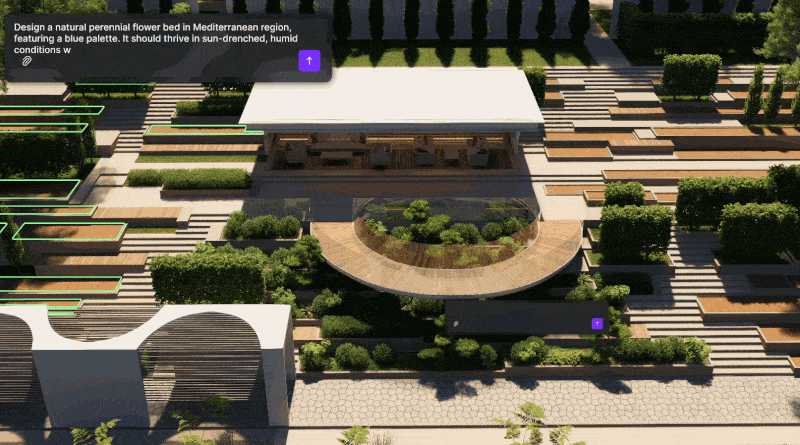
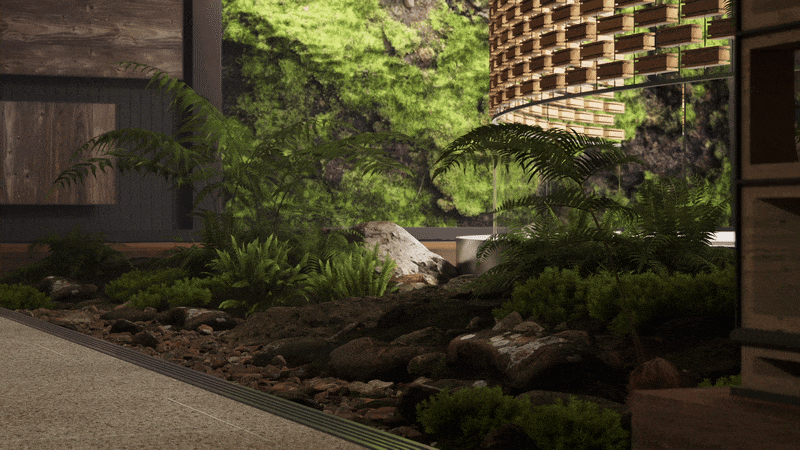


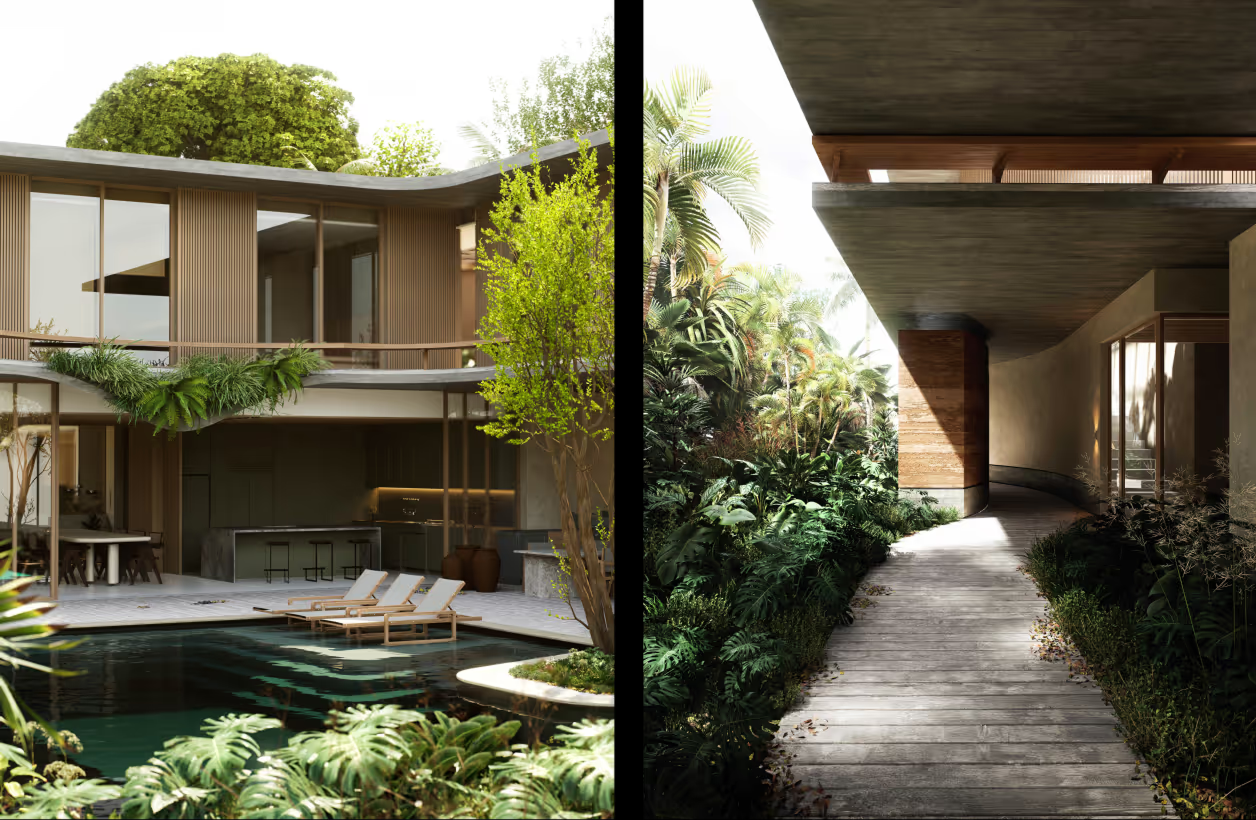


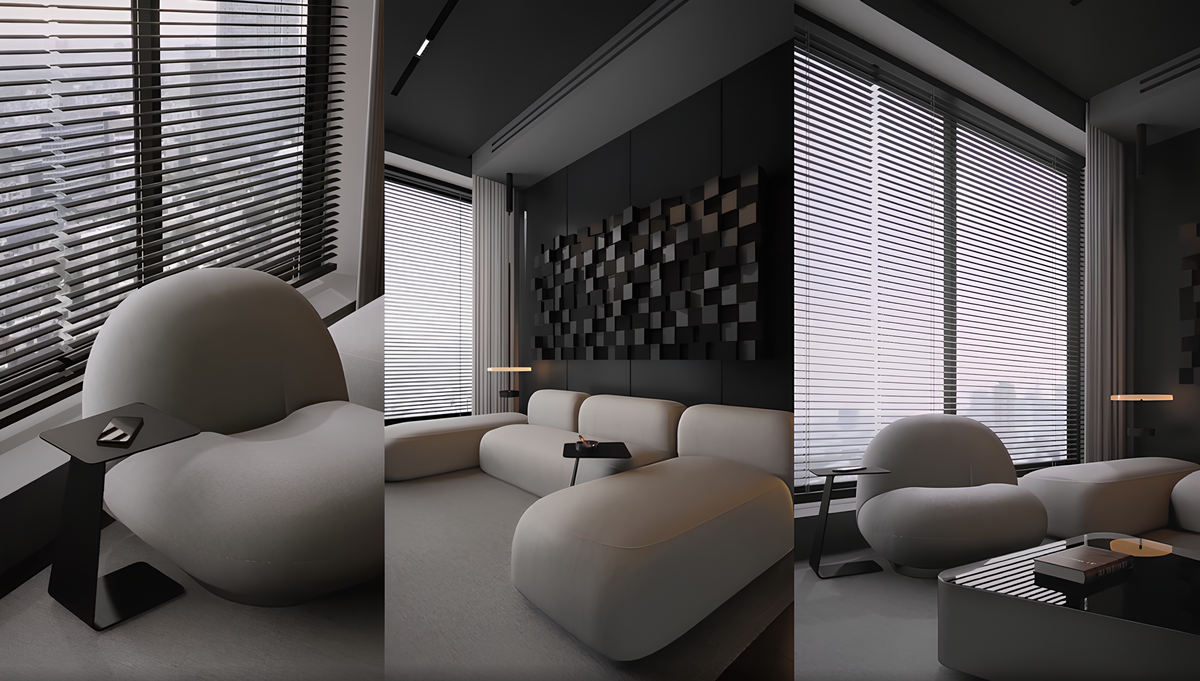




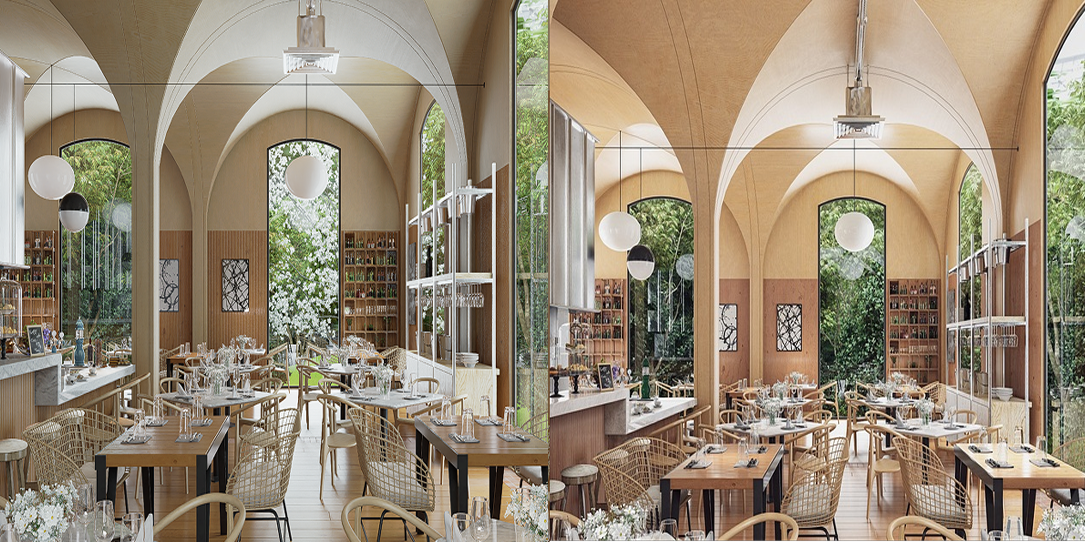
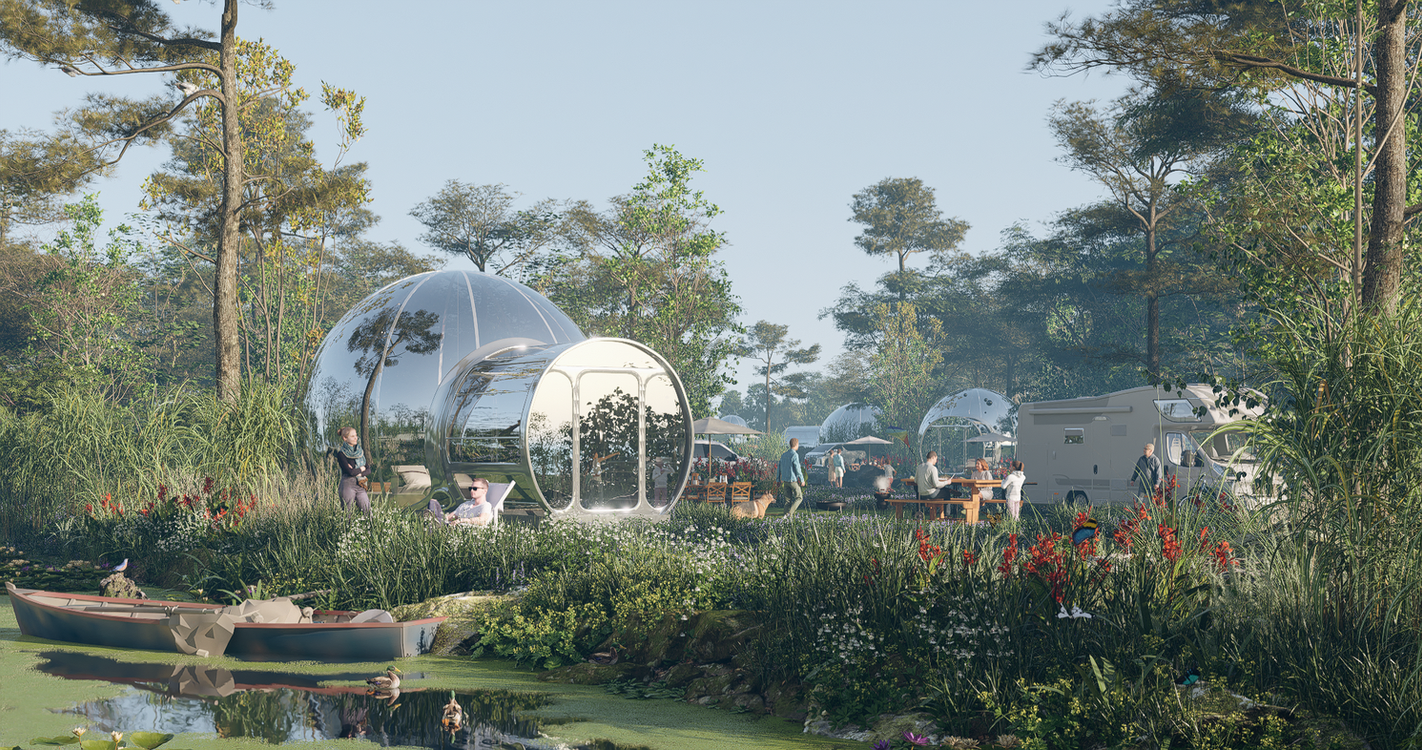
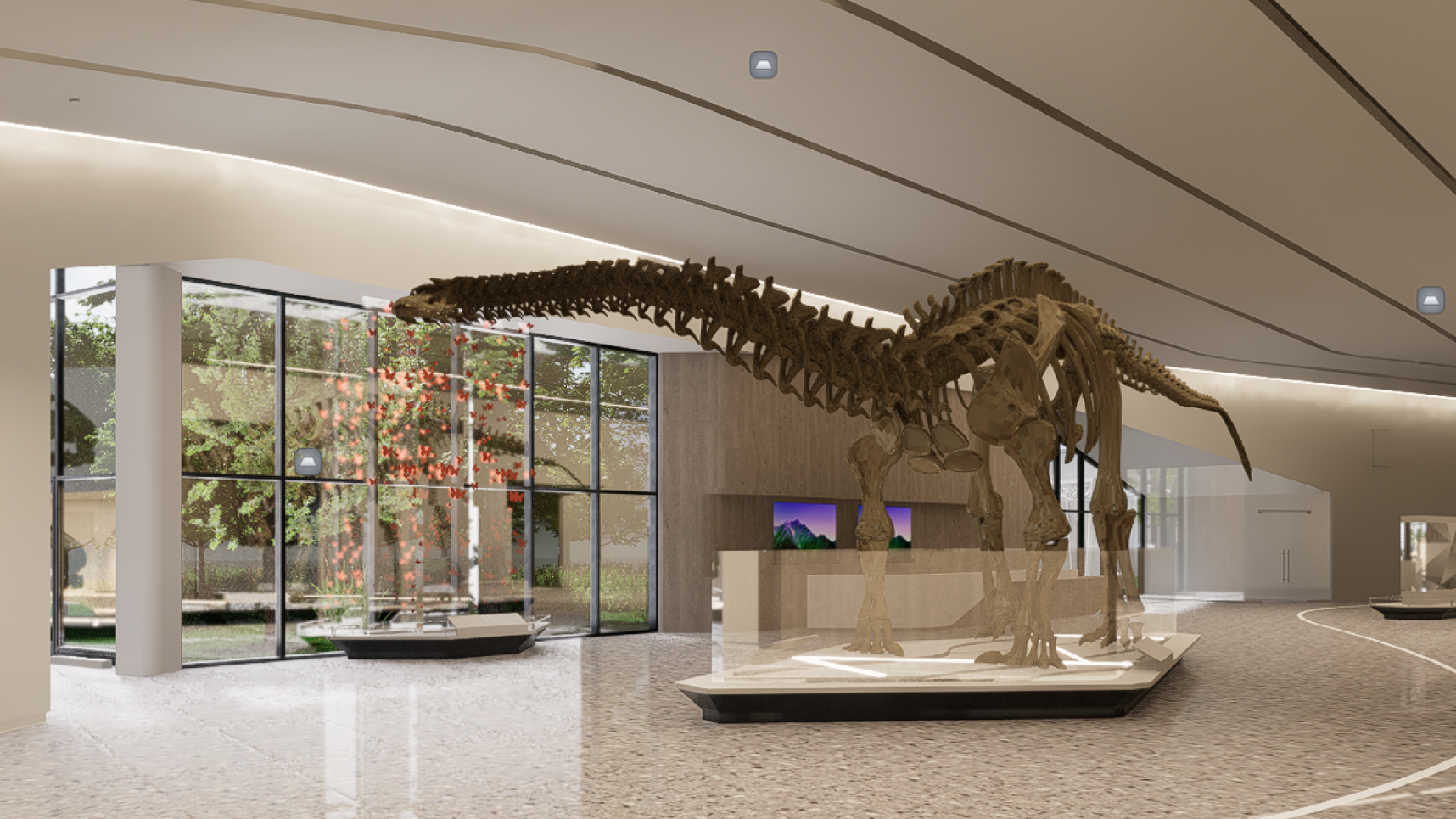
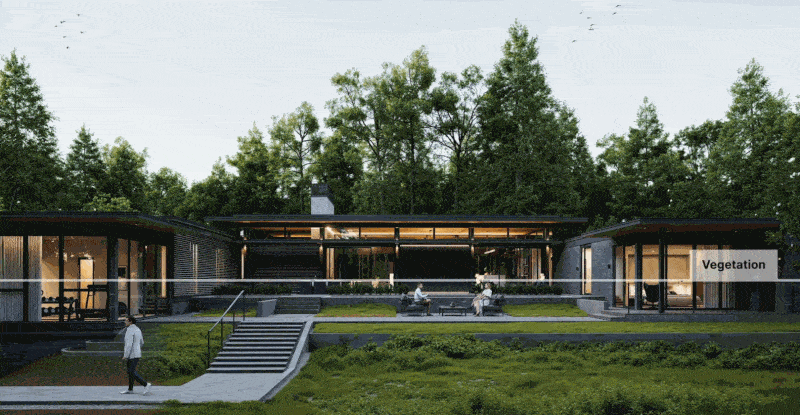
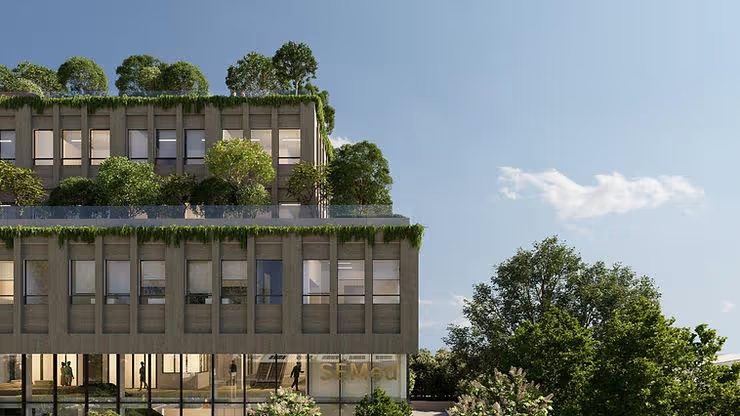
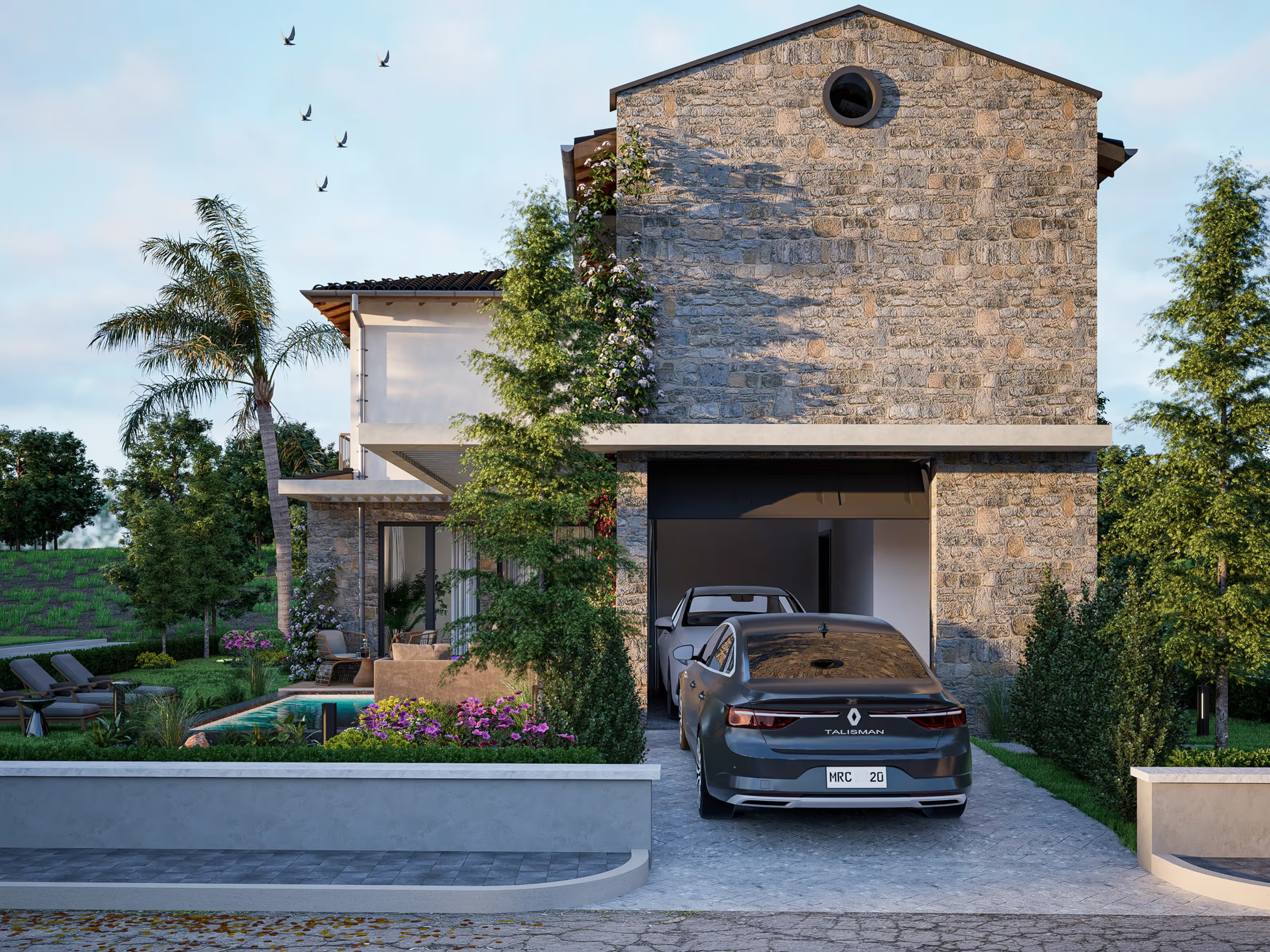



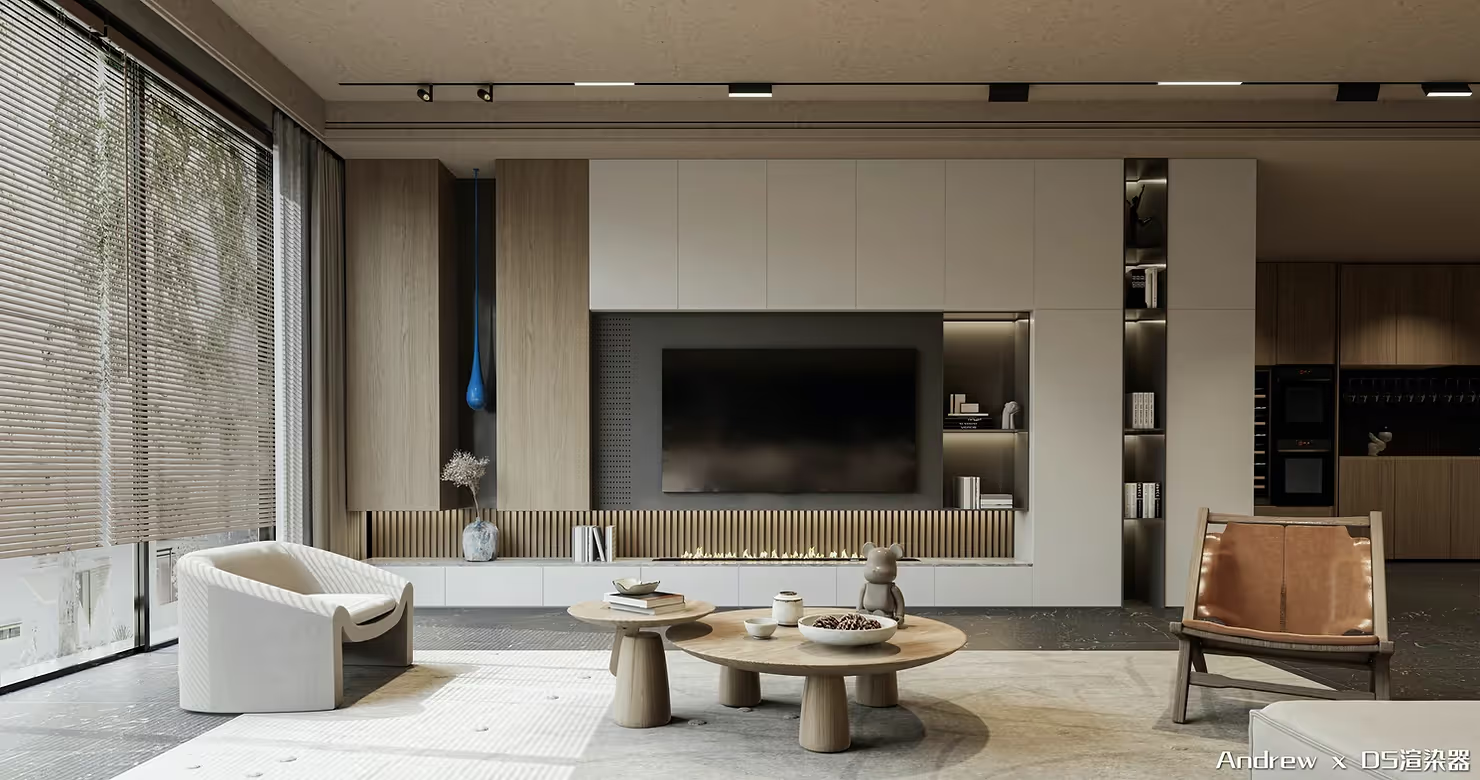
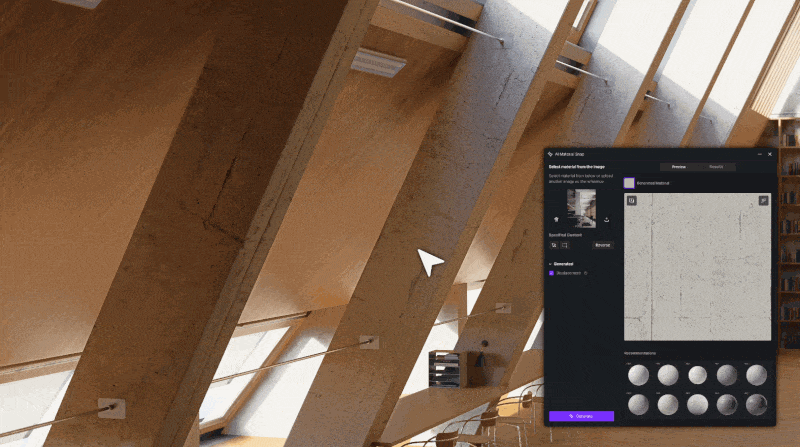
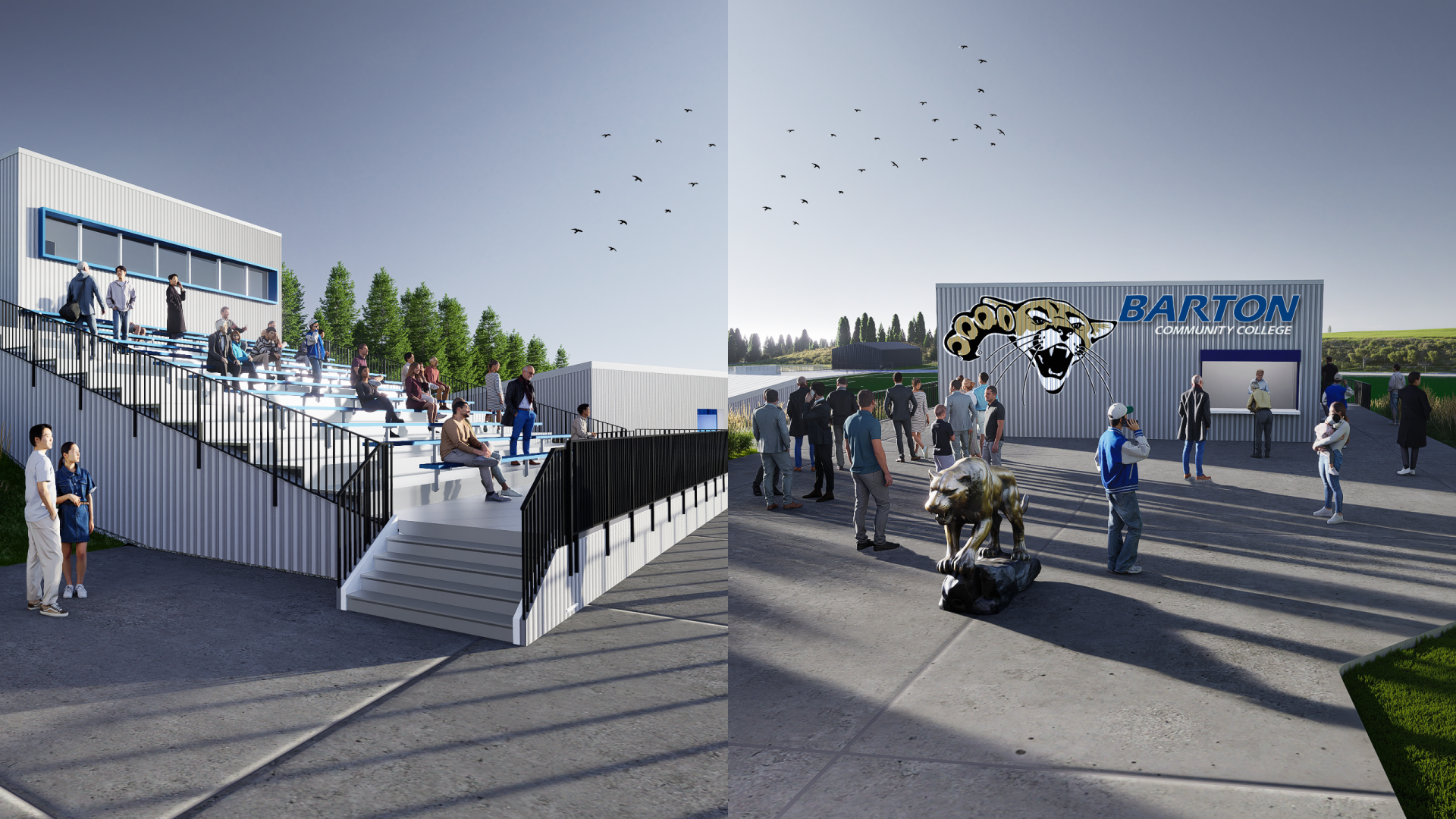




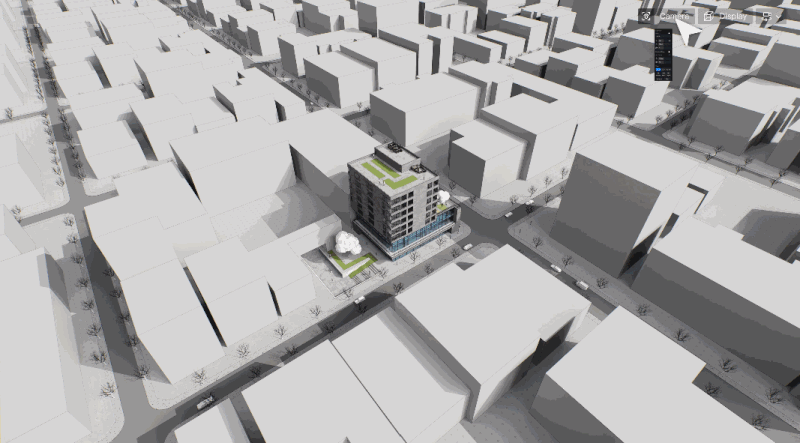

.png)
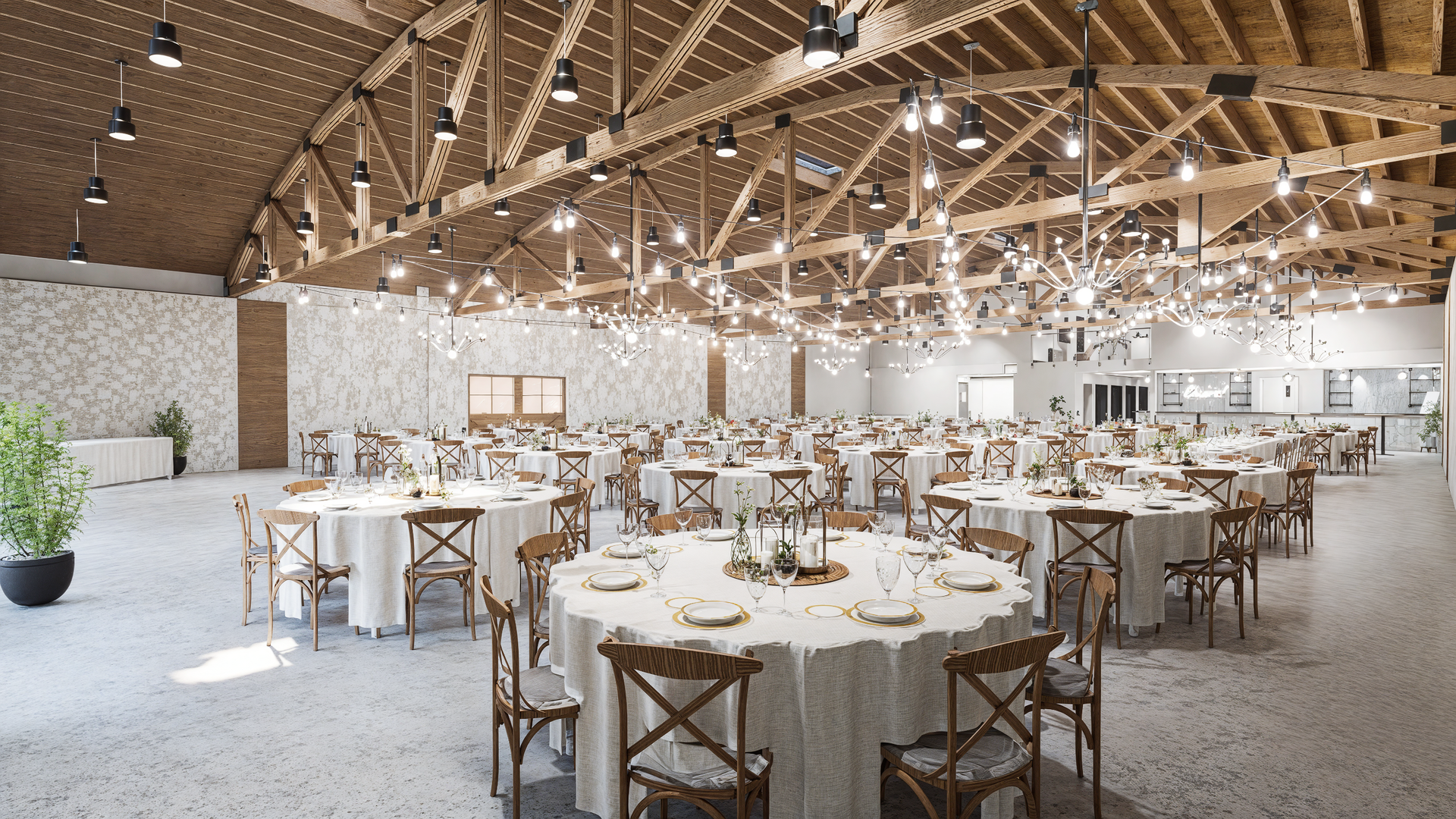
.png)


